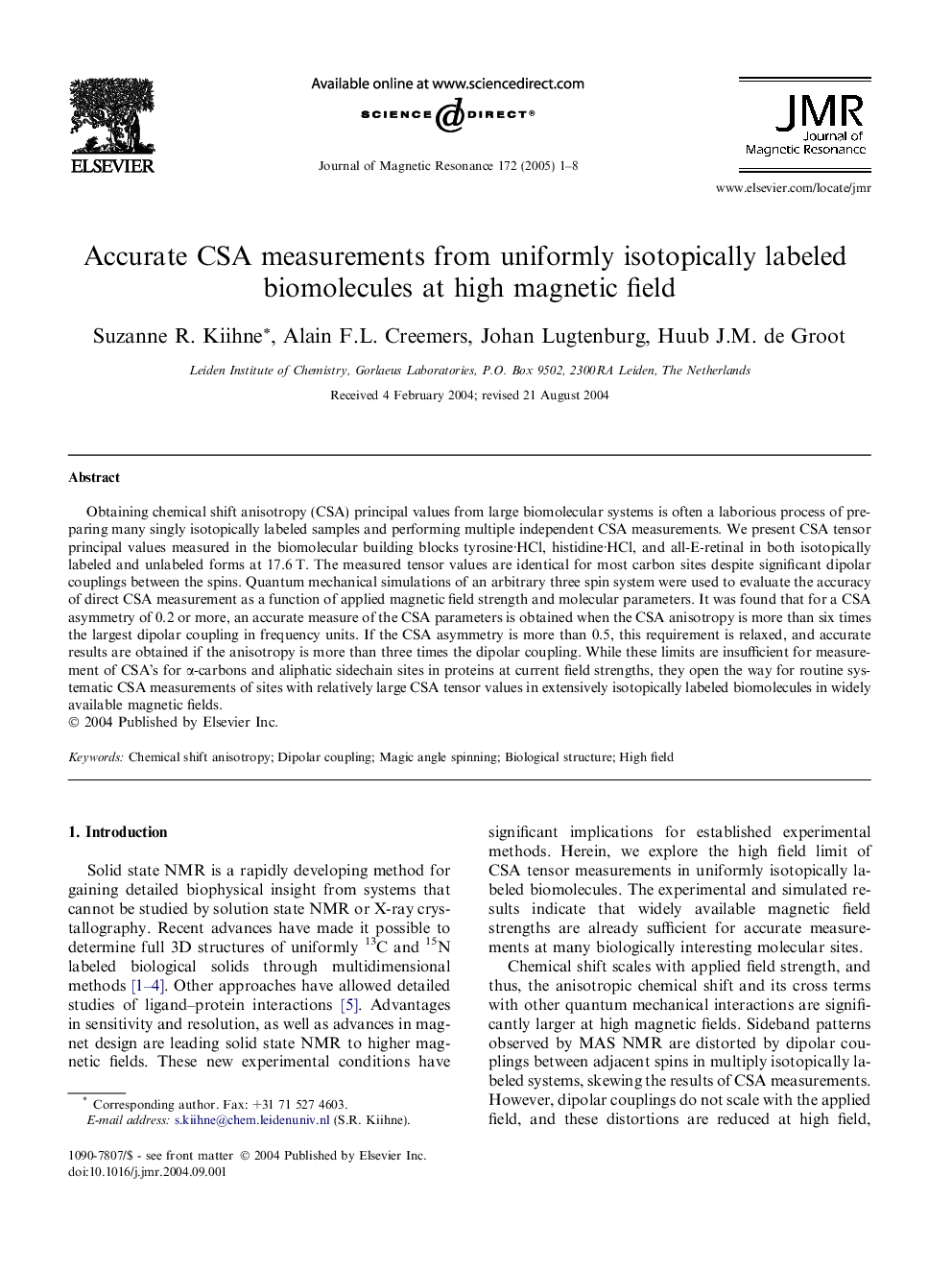| Article ID | Journal | Published Year | Pages | File Type |
|---|---|---|---|---|
| 9587595 | Journal of Magnetic Resonance | 2005 | 8 Pages |
Abstract
Obtaining chemical shift anisotropy (CSA) principal values from large biomolecular systems is often a laborious process of preparing many singly isotopically labeled samples and performing multiple independent CSA measurements. We present CSA tensor principal values measured in the biomolecular building blocks tyrosine·HCl, histidine·HCl, and all-E-retinal in both isotopically labeled and unlabeled forms at 17.6 T. The measured tensor values are identical for most carbon sites despite significant dipolar couplings between the spins. Quantum mechanical simulations of an arbitrary three spin system were used to evaluate the accuracy of direct CSA measurement as a function of applied magnetic field strength and molecular parameters. It was found that for a CSA asymmetry of 0.2 or more, an accurate measure of the CSA parameters is obtained when the CSA anisotropy is more than six times the largest dipolar coupling in frequency units. If the CSA asymmetry is more than 0.5, this requirement is relaxed, and accurate results are obtained if the anisotropy is more than three times the dipolar coupling. While these limits are insufficient for measurement of CSA's for α-carbons and aliphatic sidechain sites in proteins at current field strengths, they open the way for routine systematic CSA measurements of sites with relatively large CSA tensor values in extensively isotopically labeled biomolecules in widely available magnetic fields.
Keywords
Related Topics
Physical Sciences and Engineering
Chemistry
Physical and Theoretical Chemistry
Authors
Suzanne R. Kiihne, Alain F.L. Creemers, Johan Lugtenburg, Huub J.M. de Groot,
